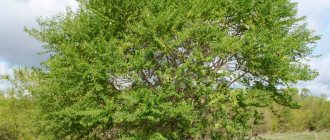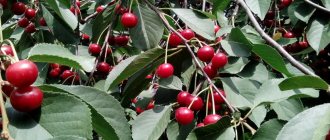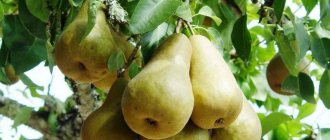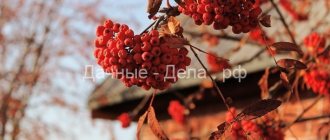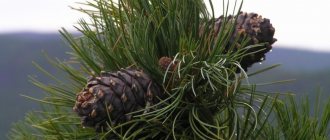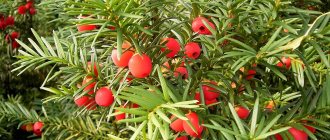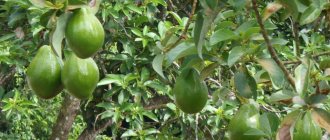Distinctive features of beech wood
A slow-growing tree, reaching up to 40 m in height and up to 150 cm in diameter, it has a well-developed cylindrical ring up to 20 m in height, devoid of branches.
The bark when young is smooth, thin, gray-green with a light sheen, and becomes silvery-gray with age, especially on limestone soils. The design is slightly grainy in the tangent plane, lightly shaded in the radial plane, and not very decorative.
The color of the wood is from yellow-red to reddish-brown, the false heartwood is from red to reddish-brown. The smell of wood is uncharacteristic.
Landing
Beeches prefer loose, neutral, slightly acidic or alkaline soils. Highly saline soils are not suitable for them. For planting, you should choose areas protected from the wind. It is recommended to add lime additives to the soil.
It is better to plant trees in the middle climate in early April, before the active growing season. Autumn plantings may not have time to take root before severe cold weather.
The holes are prepared with a depth and width of about 80 cm. When creating group plantings, a distance of about 1.5 m is left between plants. A drainage layer of small stones is laid at the bottom. After placing the seedlings, the soil is lightly compacted and watered abundantly. It is advisable to cover the tree trunk areas with a layer of moss, grass or mulch with peat.
Characteristics of beech wood
Beech wood is a hard wood (Brinell hardness class III), of medium weight. It dries well, but when desorption is prone to cracking and warping.
Fresh beech wood has a resinous odor.
- Beech wood is susceptible to pests (insects) and fungi. It is not resistant to adverse weather conditions.
- The susceptibility of wood to fungal decay is higher during warm and humid periods.
- Increasing the resistance of wood to fungus and reducing the tendency to warp is achieved by steaming fresh lumber.
Wood lends itself to any processing methods. Beech is fine-grained, so it can be processed smoothly, and the fracture surface is smooth and has a high gloss.
This wood is also susceptible to peeling and bending (after steaming).
Beech wood is easy to surface treat - gluing, painting with varnish, staining and polishing. It has high saturation, with the exception of the false core, which cannot be impregnated.
Sale of ornamental plants in open ground
A wide range of plants grown in our nursery allows us to successfully carry out:
- landscaping of city alleys, boulevards, parks
- creating flower beds, alpine slides and other landscape compositions
- plant “live” hedges
Ornamental plant nursery
In recent years, the demand for planting material of ornamental plants has increased significantly both for landscaping private households and for systemic and landscape plantings in landscaping cities and other municipalities.
We grow and sell, as well as supply ornamental plants to many garden centers in Ukraine. As a manufacturer, we can guarantee a wide range of products and high varietal characteristics of planting material, our own cultivation, adapted to our climatic conditions and good survival in a new place. The plants in the fields of the nursery are constantly monitored by our professional workers, using many years of experience and the application of the most advanced production methods in the cultivation of ornamental plants.
Wholesale and retail sales of plants grown in our nursery are carried out on the nursery trading floor: st. Rokossovskogo 64b, Kremenchug. Tel.-66, +380 67 531-55-12, +380 99 777-35-35. Email
For owners of summer cottages, private houses and offices
We invite you to visit our nursery, where you can purchase seedlings of deciduous and coniferous trees and shrubs, both in containers and with a lump of earth, fertilizers, soils, lawn seeds, stones for landscaping and other related products.
You can always get advice on selecting, planting, watering and caring for plants.
We can arrange delivery of plants to your site. Our company also offers a range of services for landscaping, landscape design and garden and dacha plot design.
The trading platform is open from 8:00 to 17:00.
Wholesale sales of ornamental plants
The nursery sells coniferous and deciduous plants with open and closed root systems, in various price categories. We invite garden centers, landscape designers, professional gardeners and other participants in the “green” business to cooperate. To each client and customer, taking into account his needs and requirements, we provide all possible conditions for creating mutually beneficial cooperation.
There is a flexible system of discounts for wholesale buyers.
Nursery of ornamental plants Gardi, Kremenchug.
Gardi became members of the European Association of Nurseries!
On January 26 in Essen, Germany, at the General Assembly of the ENA (European Nurserystock Association), a decision was made to admit us to the European Nurserystock Association.
AURI (Association of Ukrainian Plant Industry www.auri.org.ua) became the 20th member of ENA , and the only one not representing a country of the European Union. This organization includes leading countries producing planting material: Holland, Belgium, Germany, France, Finland, Italy, Poland, Serbia, Greece, Great Britain, Spain, Bulgaria, Denmark, Hungary, Ireland, Sweden, Portugal, Switzerland, Norway.
The European Association unites more than 1,700 of the best European nurseries. This is 100,000 hectares of area and more than 100,000 employees.
Joining ENA opens up new prospects for us and will allow us to cooperate even more closely with European partners.
Congratulations to our fellow participants of the Ukrainian Plant Industry Association: NATALIS, Eva, Greensad, Florium, Agro-Flora.
Plant nursery: sale of trees, shrubs and flowers Deciduous, coniferous trees and shrubs, seedlings Indoor flowers in pots, garden and flowerbed flowers Sale of plants and flowers to garden centers and retail chains
st. Rokossovskogo 64b, Kremenchug, 39600, Poltava region, Ukraine
Tel.: + 380 67 531-55-12, +380 99 777-35-35
st. Portovaya 4, Horishni Plavni, 36640, Poltava region, Ukraine
Tel.: +380 67 530-99-76
Materials used in the article:
https://www.tsvetnik.info/trees_shrubs/fagus.htm
https://www.gardi.biz/nursery
https://m.povar.ru/recipes/marinovannaya_struchkovaya_fasol-11900.html
There are no similar entries.
Add a comment Cancel reply
Beech leaves
Beech leaves are hard, shiny on the outside and wavy at the edges, with clear lines of veins. After drying, they remain on the branches for a long time. Young leaves are tender and densely pubescent.
Fruiting
Between the ages of twenty and forty years, European beech begins to bear fruit. In plantations this period shifts to 60 years. The tree grows for up to 350 years.
The root system is shallow but powerful. There is no pronounced taproot. In a forest, the roots of neighboring trees are often intertwined and often grow together. In older representatives of the species they grow, which is why they are called “root claws”. The growth from the stump is renewed at the age of about sixty years.
Shiny, elliptical in shape, wavy at the edges, reaching 10 cm in length. The tree is very beautiful not only in summer, but also in autumn, when the foliage turns copper-yellow. European beech is a monoecious plant that blooms in April-May. At the same time, leaf buds bloom.
These are triangular nuts about one and a half centimeters long, the shell of which is covered with soft short needles on the outside. The main part of the nuts, as well as the young shoots of trees, are eaten by forest inhabitants - animals and birds. Throughout the beech growing area, local residents use fried kernels for food. Oil is squeezed out of them, and the cake is brewed as a drink, somewhat reminiscent of coffee in taste. Nuts ground into flour are used for baking. It is interesting that, according to popular belief, the larger the harvest of nuts on the beech tree, the harsher the winter ahead.
Regions of distribution of the beech tree
It grows in many places on the planet. Experts highlight the European beech (Fagus sylvatica),
- Native to Europe and Western Asia;
- Eastern beech (Fagus sylvatica subsp. Orientalis) is found in Southeast Europe and Western Asia,
- Beech (Fagus grandifolia) is found in eastern North America (from southern Canada through the United States to northern Mexico).
Place of growth
Most species live in the temperate climate zone of North America and Eurasia. Distributed everywhere in areas up to 2500 m above sea level. Prefer fertile soils . Beeches dominate in mixed and deciduous forests. Thick dark tree crowns shade low trees and shrubs. Usually, only a perennial grass substrate can be found near the trunks.
Trees are insensitive to lack of lighting and love moist, warm air. They cannot tolerate cold winds, prolonged winter frosts, or polluted atmospheres.
Growing and care
Beech trees have the highest demands on soil type. They need a fertile, fresh and clay area. Deciduous trees do not tolerate limestone and floodplain substrates, which harm their development. However, they are tolerant of soil acidity.
- Beech - tolerates sun and shade well, but varieties with multi-colored leaves are best planted in brighter places.
- Young plants should not be dried, as this may lead to their death.
- Young plant specimens should be covered before winter, adults should be frost-resistant.
Deciduous trees are a wonderful decoration for urban spaces, because they adapt well to any conditions.
Features of culture propagation
Among several methods of beech propagation, the best is considered to be the germination of seeds obtained from the ripe fruits of this crop. In this case, there is a fairly high probability that the new plants will not only put down a lot of roots, but will also be able to retain all the characteristics of the mother tree.
Growing young plants from seeds is not difficult; you just need to carefully obtain the kernels from ripe fruits, wash them and dry them well. After this, it is important to soak them for several hours in a weak solution of potassium permanganate. Then you need to sow the seed material in large containers filled with fertile soil and water the seedlings with water at room temperature.
Application of beech wood
Veneer (beech is mainly used for edged veneer from plywood, laminated boards, pressed wood), wood for furniture, parquet.
There is also beech construction timber. This tree is used to create cars. Used in high-rise construction. Beech is used to make chipboard and fibreboard, paper and cellulose, sports equipment, barrels, boxes, benches, handles (tool holders), household appliances, wood wool, toys.
In addition, beech is used to produce wood vinegar, charcoal and tar oil. Suitable for turning.
Beech wood was commonly used as a raw material for the production of horse-drawn carriages (spokes, wheels, shock absorbers, struts, drawbars and towbars), plain bearing bushings, gears and pulleys in mill and agricultural machinery, parts for shipbuilding (keels, ship superstructures, sailing oars), elements of plows, trusses, harrow teeth, working plates of joiner's and carpenter's tables.
Currently, beech wood is valued as a raw material for the production of veneer, plywood, pressed wood and laminated boards. It is a major component of plywood used in the modeling and transportation industries to produce cargo boxes and bus seat structures.
Beech wood is suitable for parquet, chipboard and fibreboard, stairs, thresholds and cladding. It is also used in earth, water and high-rise construction (structures, formwork, supports) and in the mining industry.
- Beech is used for the production of boxes, barrels, tools, elements of cars and sports equipment, butts, musical instruments (for example, drums), toys and various everyday items.
- Beech wood is highly valued in the furniture industry. Used in the production of upholstered furniture frames and bent furniture parts, which are of great value if the raw material used is obtained from bleached wood without false core.
- Beech wood is used in the pulp and paper industry for the production of pulp and paper. Also required in the chemical industry for the production of vinegar, cotton wool and coal slurry.
Beech wood has a high calorific value; It ignites easily and burns for many hours with a steady, bright flame. Used as firewood and for smoking food products such as fish and pork.
Use in folk medicine
For herbalists and traditional healers, the bark and leaves of European beech are valuable. They are used in the treatment of:
- Gastrointestinal tract;
- diabetes;
- skin and hair diseases;
- respiratory system.
Tea is the most common form of consuming beech leaves as a medicine. This drink has a whole range of beneficial properties. The tea should be brewed as follows: pour 250 ml of boiling water over a teaspoon (teaspoon) of crushed dry beech leaves and let it brew for thirty minutes. When taken orally, prescribe 200 ml of the drink three times a day before meals.
Leaf tea has several possible uses.
As compresses and lotions on wounds and ulcers. One of the main properties of beech-based preparations is healing and antiseptic.
As an additional remedy in complex therapy for the treatment of diabetes and stomach pain, tea improves appetite and has a calming effect on the nervous system.
